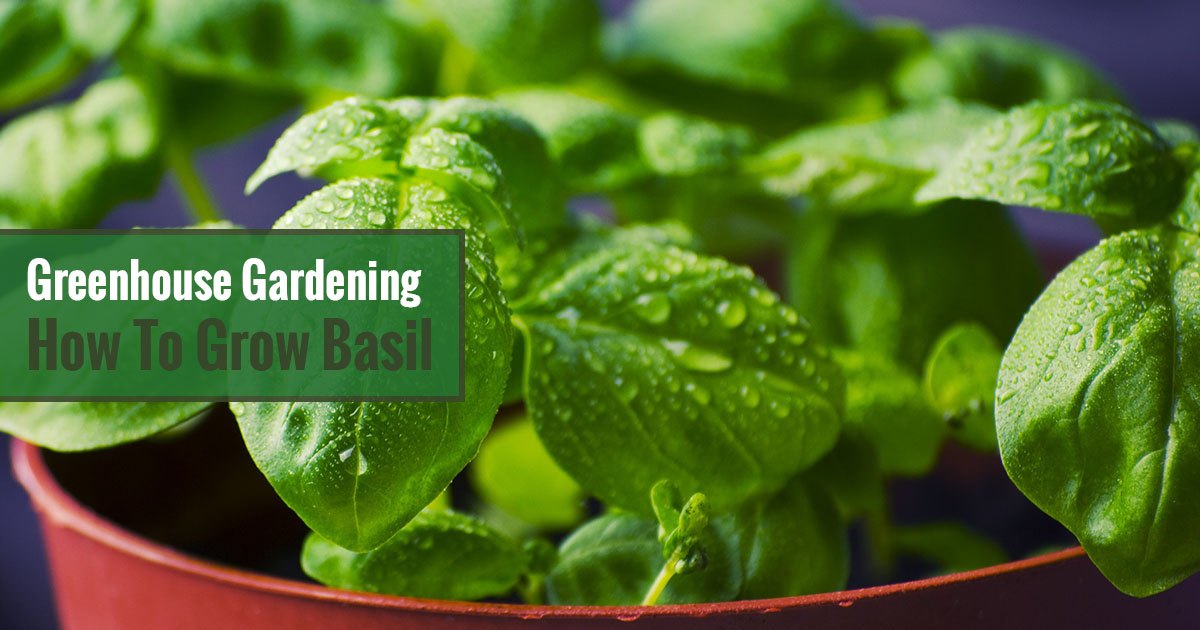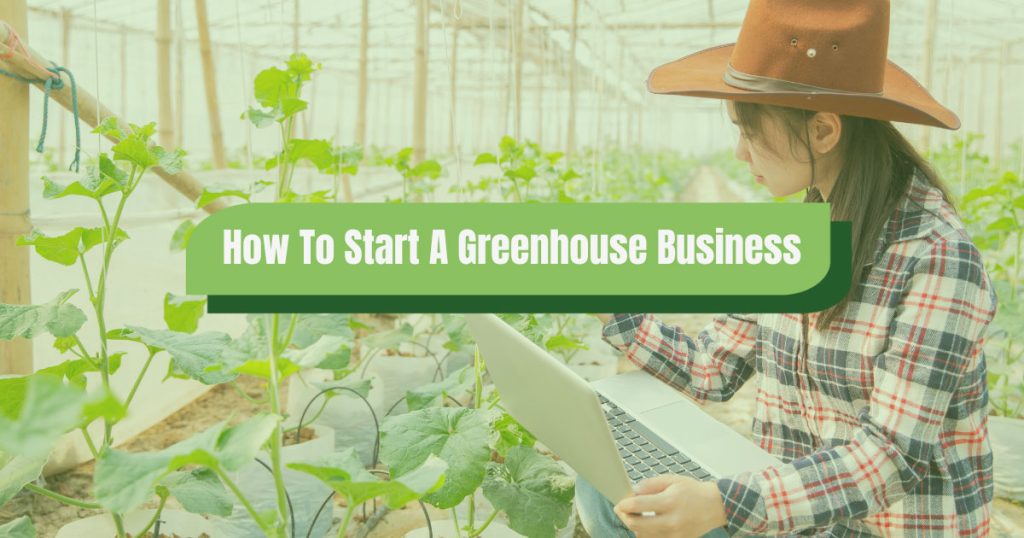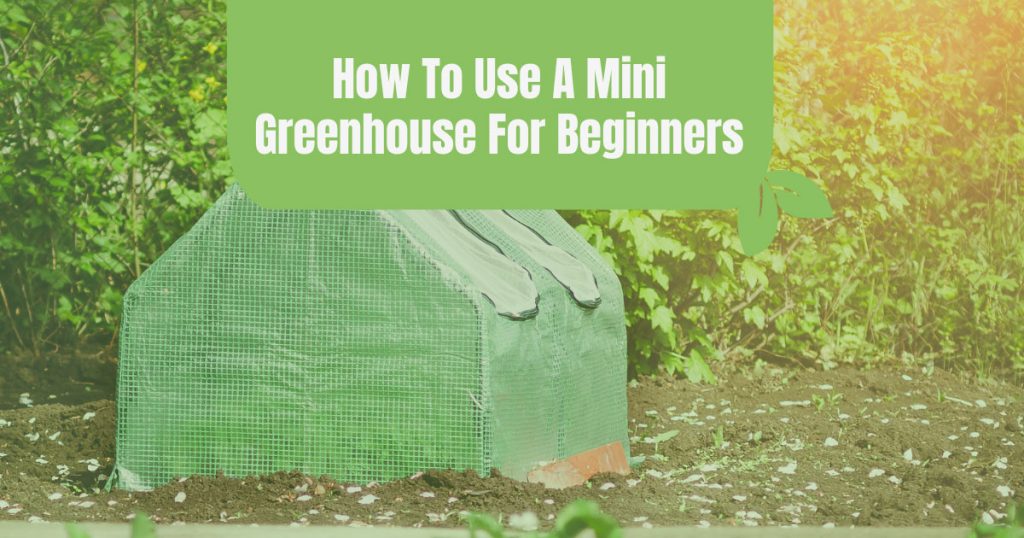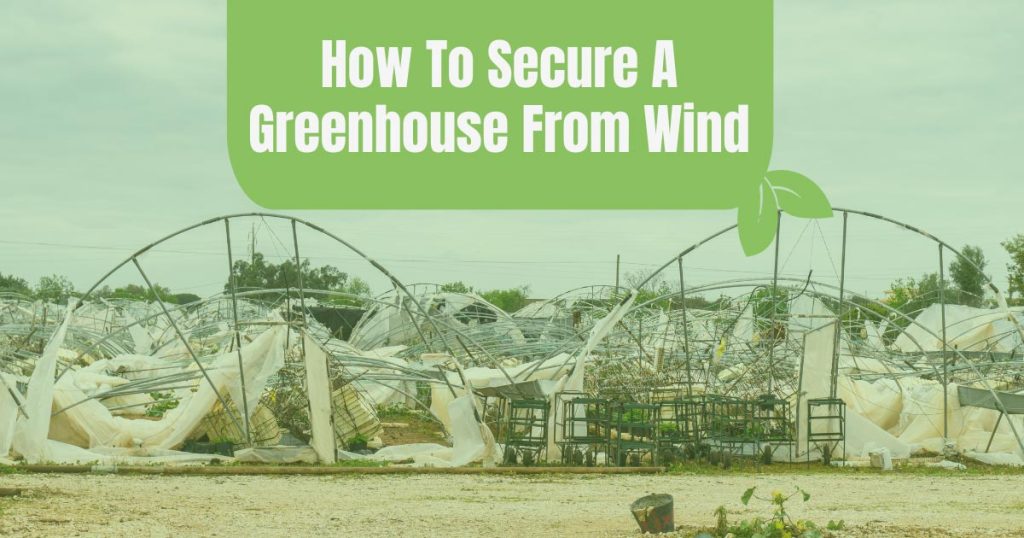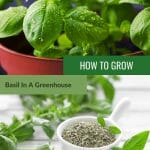
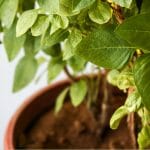
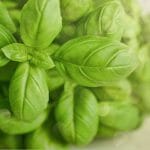
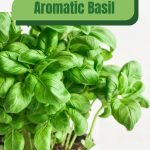


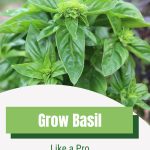
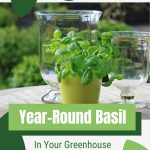
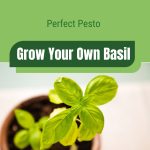
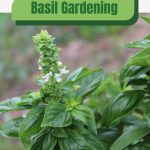
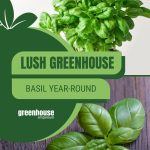
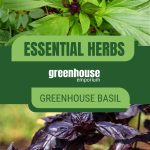
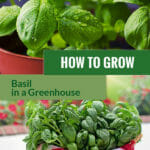
There’s nothing more delicious than fresh, homegrown basil. It’s one of the most versatile herbs, popularly used in Italian cuisine and even refreshing cocktails. And while it’s easy enough to grow outdoors in the summer months, it’s a great option for year-round growing in the greenhouse!
If you’re intimidated by growing basil in the greenhouse, you’ll be happy to learn that it’s relatively easy, once you understand its care requirements. Basil prefers warm, moist conditions with plenty of light, all of which can be easily manipulated in a greenhouse environment.
Whether you have a small greenhouse or a large one, basil is one of those plants that you should always consider having around. In addition to its many uses, it’s a beautiful herb with a strong aroma that can even help keep pests at bay. So what are you waiting for? Keep reading to learn all about growing basil in a greenhouse!
The benefits of growing basil
Basil, or Ocimum basilicum, is a member of the Lamiaceae family, or the mint family! Like mint, basil is a tender, edible plant widely used in cuisines and added to salads. Although basil is commonly found in Italian and Thai cooking, it first originated in India.
Basil is a warm-season herb that loves plenty of sun, so it can often be found growing in the summer garden. With a greenhouse, however, you can grow basil even when the first frost arrives, providing you with its aromatic flavor and benefits all year long.
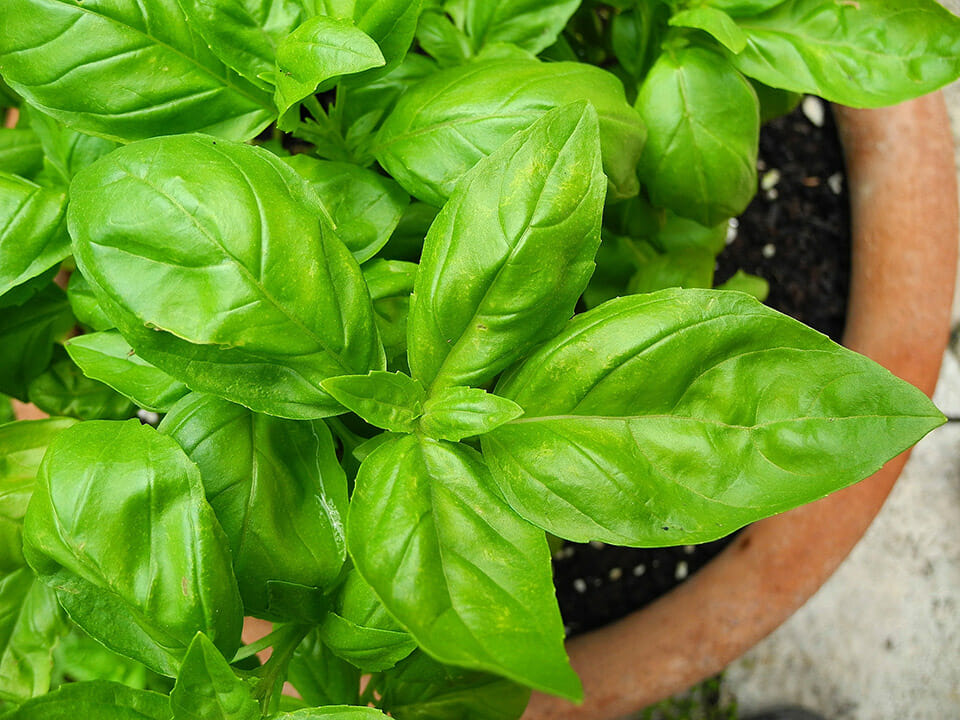
Health benefits of basil
Basil is a highly versatile herb that has many uses beyond its ornamental value. Basil leaves are a flavorful addition to many culinary dishes, from salads to pastas and more. They have great nutritional value, too, as they’re packed with antioxidants and inflammation-fighting vitamins and minerals.
Additionally, basil is great for clearing the nasal passageway, which can help fight off colds and reduce oxidative stress in the body. Basil can also be used as a natural remedy for soothing bug bites and calming nausea and stomach upset.
While adding fresh leaves to your cooking will provide basil’s nourishing health benefits, some people prefer to use dried basil or basil essential oil for a more concentrated effect.
Quick overview of growing basil in a greenhouse
- Type: Warm-season crop
- Time from seed to harvest: 45-60 days
- Germination temp: above 65°F
- Time until first emergence: 5-7 days
- Best temp to grow: around 70°F
- Height: 1-2 ft
- Spread: 1-3 ft
- Grow from seed: 1/4 in deep, 1in apart; thin to 10-12in spacings
- Companions: Marigolds, potatoes, borage, chamomile, oregano, chives, root vegetables, asparagus
- Keep away from: Cucumbers, fennel, other herbs (such as thyme, common rue, sage)
How to grow basil in a greenhouse
Basil is one of the easiest herbs to grow in a greenhouse environment, provided it gets plenty of light. To get started, you first need to decide on the type of basil you want to grow (or types) and where you’ll plant it: in an in-ground bed, in pots, or even in a hydroponic system!
Picking the right variety of basil to grow in a greenhouse
There are more than 150 known varieties of basil to choose from, all of which can be grown in greenhouse conditions.
Each variety has a different appearance, color, and even flavor profile. Here are just a few types of basil that would grow well in greenhouse conditions, although you can successfully grow just about any variety in your greenhouse:
| Basil type | Appearance | Flavor |
| Piccolino | Compact growth with tiny spherical-shaped leaves | Intense and bold (hints of cinnamon and mint) |
| Corsican | Ornamental leaves with dark purple variegation | Mild, sweet |
| Genovese | Larger leaves and can grow up to 2 feet tall | Sweet with a light spiciness, perfect for pesto and sauces |
| Eleonora | Rounded, cupped, serrated leaves | Slightly spicier than Genovese |
| Amethyst | Thick, deep purple leaves | Sweet |
| Red Rubin | Compact, reddish-purple leaves | Sharp, strong flavor |
| Mammolo | Longer, larger leaf shape | Less mint flavor than traditional Italian basils |
| Thai Basil (or Sweet Thai Basil) | Leaves with purple veins and purple stems | Anise, licorice, and clove flavor (overall sweet) |
| Siam Queen | Purple stems, light green leaves | Very spicy and intense flavor, great for soup |
| Lemon Basil | Thin, light green leaves | Anise, basil, and lemon combined |
| Cinnamon Basil | Dark green leaves, cinnamon-colored stems | Spicy cinnamon flavor |
| Christmas Basil | Glossy, green leaves with burgundy stems | Classic basil flavor with a mix of fruity sweetness |
How to grow basil from seed
When starting basil from seeds, you can either start them in a heated greenhouse or use a heat mat underneath the trays. Whichever you decide, the soil temperature shouldn’t drop below 70°F, and the ambient temperature should be at least 55-60°F. Keep in mind, the warmer the soil, the quicker the seeds will germinate, but too hot and they may fail to germinate altogether.
Fill a seedling tray with a seed starting soil mix, and add 1-2 seeds per cell. In the first few weeks, it’s important to keep the soil moist, but not soaking wet.
When the young basil plants have more than five true leaves, transplant it to its final growing area. You should plant the seedlings at least 4-6 inches apart to provide sufficient space to develop properly.
Whether you’re growing your basil from seed or as a seedling, choosing a spot in your greenhouse that will get 6-8 hours of sunlight each day is important.
How long does basil take to grow?
When started from seed, basil usually takes around 5-14 days to germinate. Exact germination rates can vary between varieties of basil. Moreover, soil temperature that’s too hot or too cold can slow down germination, so use a heat mat if ambient temperatures are below 60°F.
Once sprouted, give your young basil plants at least 30-40 days to grow before starting light harvesting. For heavier harvesting, plan to wait about 60-70 days after sprouting.
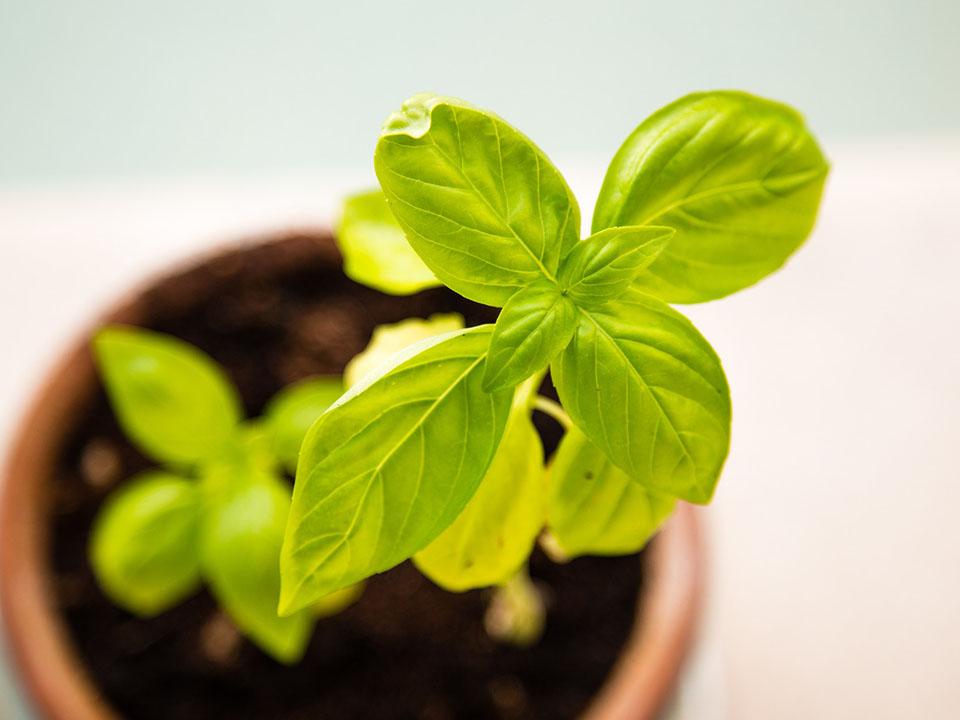
An established basil plant can continue to yield for several months before it starts to flower and go to seed. To prolong this, make sure to pinch off any flowers as soon as they appear! Unfortunately, since basil is an annual plant, it will inevitably go to seed. You can ensure a steady supply of basil by practicing succession planting.
Companion planting
Once you’ve picked which variety or varieties of basil you want to grow in your greenhouse, you should consider whether you’ll be planting it by itself or along with other pots. While basil can certainly grow well in a pot, basil is quite versatile and can be grown successfully alongside a variety of other herbs and vegetables:
Asparagus is a great choice to grow with basil since the combination of the two attracts ladybugs, which feast on common pests like aphids. In return, basil helps ward off asparagus beetles. Finally, asparagus grows quite tall, so if you plant them accordingly, it can provide a bit of afternoon shade for your basil.
Marigolds are an excellent natural repellent for pests. When grown together, basil and marigold keep pests at bay while attracting beneficial insects.
While basil generally prefers vegetables for companions, flowering herbs including chamomile, oregano, and chives have similar care requirements and can even enhance the flavor of your basil plants.
Tomatoes and basil are not just friends on the plate but in the soil too! Basil is very helpful in deterring tomato hornworms and increasing the yield of your tomato plants.
Peppers are another great companion for basil, even if their friendship is one-sided. Basil is great at boosting humidity levels for pepper plants, which will help them grow faster.
Root vegetables are often a target for pests due to their vulnerable and delicious foliage above the ground. Planting some basil alongside your root vegetables, such as carrots, beets, or radishes, will benefit your veggies since basil does an excellent job of deterring pests.
What not to plant with basil
While basil can enhance the growth (and even flavor) of other herbs and vegetables, there are a few types of plants that you should avoid planting directly alongside your basil:
Cucumbers are made up of mostly water, so they tend to absorb other flavors easily. Therefore, unless you intend to produce cucumbers with a basil flavor, it’s best to avoid planting them closer together.
While you won’t run into too many issues if you plant your rosemary nearby, you’ll want them growing in separate pots. Rosemary has different care requirements than basil, particularly regarding soil conditions, so to avoid watering struggles, it’s best to keep them separated.

Rue and basil are not buddies for several reasons. First, rue is a natural growth inhibitor, which can stunt the growth of your basil plants. These plants also prefer drier soil conditions, which make them incompatible with basil.
Sage is quite similar to rosemary in that sage also prefers drier soil conditions. Unfortunately, this would ultimately make sage incompatible with basil if potted together.
Ideal growing conditions for basil
While mint has the reputation of being extremely forgiving of its conditions, basil is slightly more particular about its growing conditions. Still, with just a little bit of attention to detail, basil can be equally as prolific in its growth, giving you plenty of yield all year long in your greenhouse.
Temperature tolerance
If your greenhouse is not temperature controlled, you should wait at least 2 weeks after the first frost to plant your basil. If you aren’t doing so already, you should install a thermometer to track the ambient temperature of your greenhouse, which is usually a bit warmer and more insulated than outdoor temperatures.
As a warm-season herb, basil prefers a soil temperature of at least 50°F but ideally around 70°F. Ambient temperatures should also be around 70°F for best results. You can raise the temperature of your greenhouse with seedling mats or space heaters.
Moisture requirements
Moist but not saturated soil is key to a prolific basil plant. Typically, greenhouses have no problems with humidity, but keeping a warm and humid greenhouse with sufficient airflow will ensure that your basil plant grows happy and healthy.
Soil requirements
Selecting or mixing a potting soil that is nutrient dense is essential. You can add compost to your soil as well as other components such as blood meal or cottonseed meal. Basil prefers soil with a pH level between 6-7.5.
Lastly, when choosing soil, it’s important to choose a well-draining soil mix. Even though basil plants prefer moist soil, it shouldn’t be dense or soggy, as this can lead to root rot.

How to care for greenhouse basil
Once you’ve started your basil plants, they’ll need some care to help them on their way. Luckily, they’re not too picky, but as tender plants it’s important not to let the growing conditions go too far towards one extreme or another.
Watering requirements
Basil plants prefer consistently moist soil as long as the soil is well-draining. Too much standing water can result in root rot, which can kill your basil plants.
For ease of use, we recommend an automatic watering system that provides a regular amount of water on a schedule. Water at the roots with drip irrigation to avoid wetting the leaves and stalks, which can encourage fungal diseases. Container-grown basil may require watering more frequently, as much as 3-4 times per week.
If you’re growing your basil in containers in your greenhouse, add mulch to the top of the pot to prevent water from evaporating too quickly during the height of the growing season.
Light requirements
Make sure your basil receives at least 6-8 hours of full sun daily. If you live in an area with scorching summers, you can provide your basil shade in the afternoon to prevent the leaves from burning or wilting.
In the winter, you may need to supplement your basil with artificial grow lights, depending on your climate and location. Depending on the grow light, you may need to schedule them for upwards of 10 hours per day.
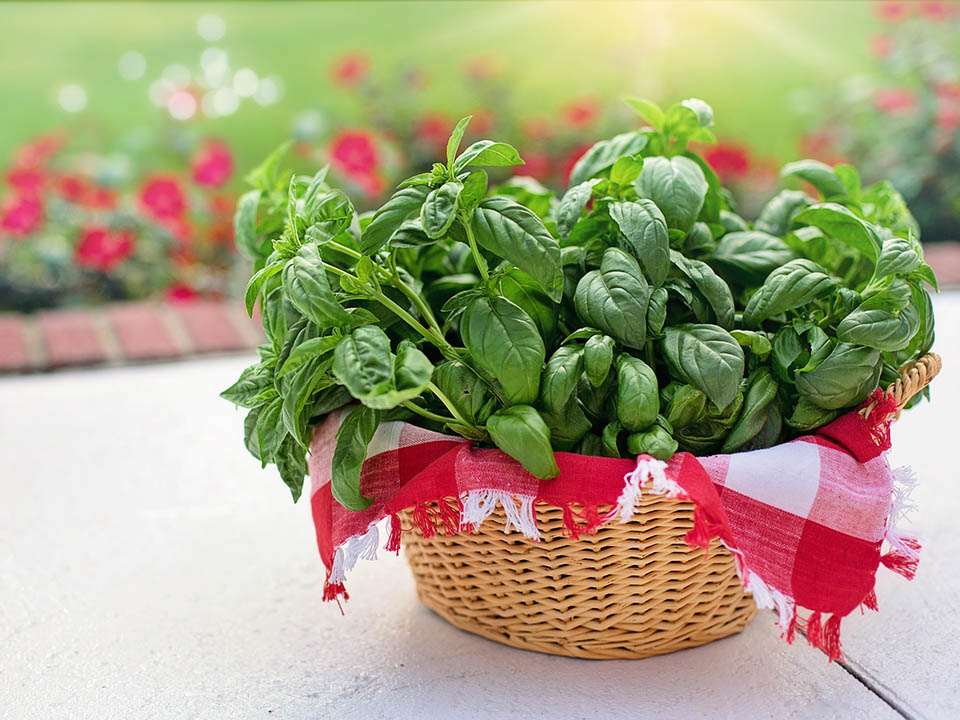
Fertilizing requirements
If the soil where your basil is planted is rich with organic matter, you can fertilize your basil sparingly. For example, you can use a fertilizer with an N-P-K ratio of about 5-10-5, diluted significantly and only during the growing season.
However, take care not to over-fertilize your basil, as this can impact the flavor and aroma.
Pruning requirements
The secret to growing beautiful, bushy, and delicious basil plants is pruning. Pruning regularly, even if you don’t need to harvest the basil at that particular time, is a great way to encourage new leaf growth. This is particularly important if you’re growing basil to harvest the leaves rather than for growing flowers and seeds.
Prune your basil at the newer growth point with two leaves. Avoid pruning the plant’s main stem, although if you accidentally prune part of the main stem, it isn’t catastrophic. Cutting the new growth will help your basil plant become fuller and bushier instead of growing vertically.
For basil, it’s recommended that you pinch out the young buds as soon as they appear to ensure that the plant continues branching and producing more leaves.
Diseases and common problems
While basil can be a great pest repellant, we’re unfortunately not the only ones who find basil delicious. Some pests find them just as appealing. You may find a few common pests enjoying your basil, including:
- Aphids
- Spider mites
- Whiteflies
- Japanese beetles
- Grasshoppers
- Slugs and snails
If you suspect that you may have a pest on your basil, you can use a hose to gently spray any adult pests off the plant and then treat your basil with neem oil. If possible, isolate the affected basil plants until you have eradicated the pests.
The most common disease you’ll find on your basil is leaf spot. You’ll find either black or brown spots on your basil leaves. This can occur for a few reasons, but most often from excessive humidity or stagnant water sitting on the basil leaves, forming lesions.
If you suspect your basil has leaf spot, prune the affected leaves and ensure that it has plenty of room to breathe from other plants to get the air circulation it needs.
Powdery mildew can also cause a lot of damage to your basil plants. As the name suggests, the symptoms are mildew forming on your basil leaves resulting from a fungal infection. If you suspect your basil has powdery mildew, you should prune and dispose of any affected leaves and treat your plant with neem oil.
Lastly, your basil may experience nitrogen deficiency. If your basil is nitrogen deficient, the leaves may turn yellow when there are otherwise no signs of pests or disease. In this case, the soil could need a boost of fertilizer, particularly nitrogen-rich fertilizer.

How to harvest greenhouse-grown basil
For best results, start harvesting your basil when it’s approximately six to eight inches tall. This encourages the plant to branch and produce more and more leaves for a longer harvesting period. For optimal flavor, you should only harvest as much basil as you need or harvest as part of your pruning schedule.
Since basil is a tender herb, you should use it immediately after harvesting. Mash it with garlic, oil, and salt to make a refreshing pesto, or simply add it as garnish to your dishes or cocktails!

